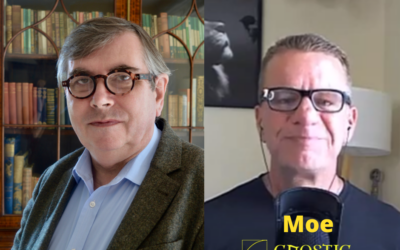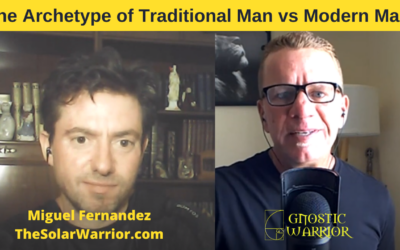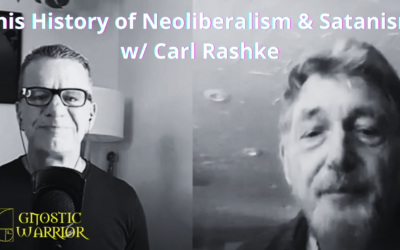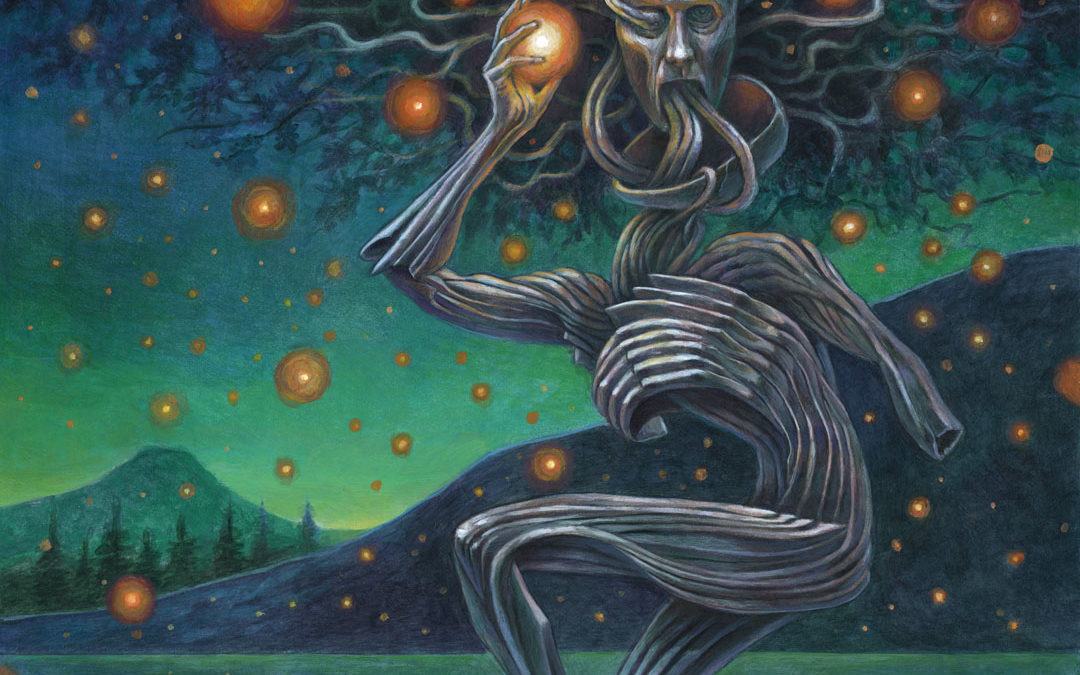
by Moe | Feb 6, 2020 | Latest Media, Mystical Christianity, Simon Magus
“I was ordained from of old, and I was present in the formation of the first human, when he was molded by God.”
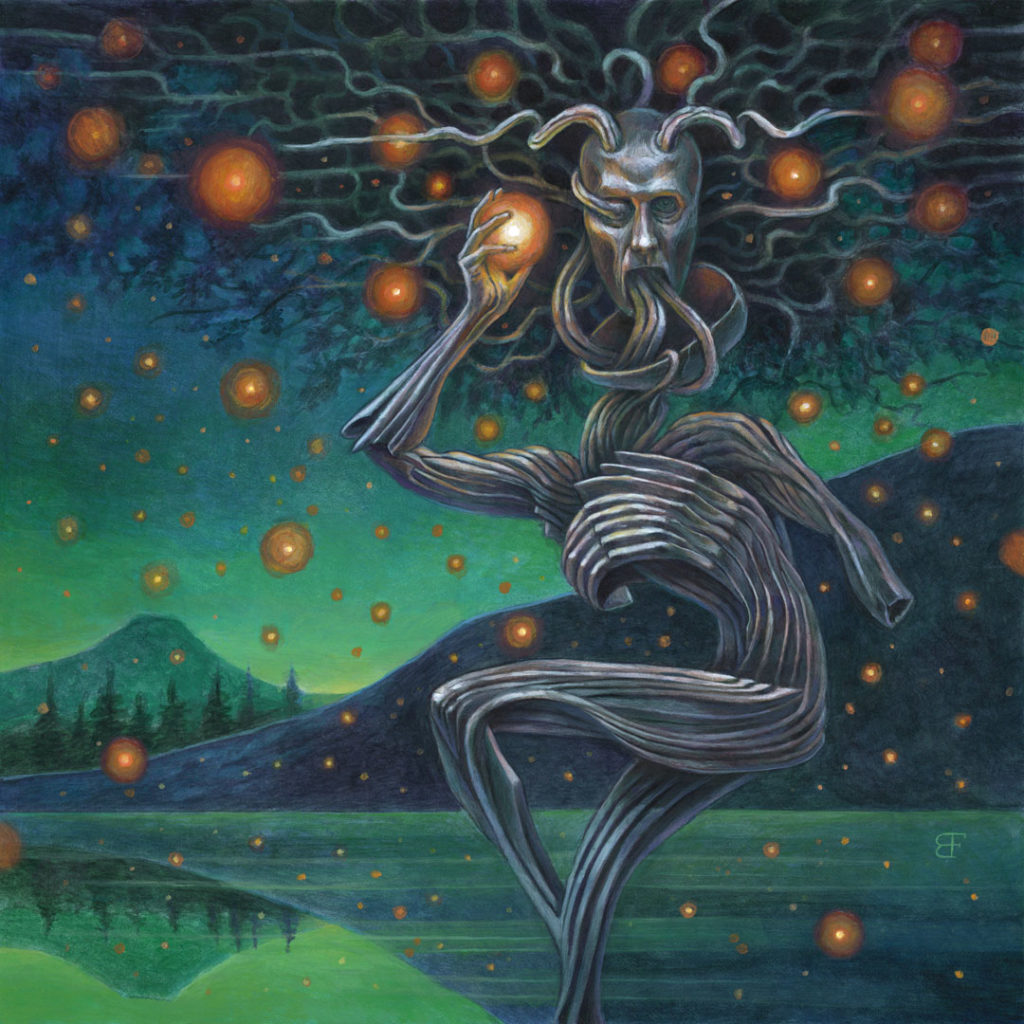
In the Scripture, God is sometimes referred to as the potter and we humans are the clay pots he continually shapes and molds into his creations. As it is said in Isaiah, “Yet, O Lord, you are our Father; we are the clay, and you are our potter.”
For example, the first man, Adam signifies the son of God (Luke 3:38) and clay or the red earth out of which man was molded by the divine “Potter” (Isaiah lxiv. 8.) and the New Testament (Law) has numerous references to Jesus, as the only begotten Son of God since the time of the Dogmas set forth by the Nicene Creed when it was officially declared by the Council;
“We believe in one God, the Father Almighty, Maker of all things visible and invisible. And in on Lord Jesus Christ, the Son of God, begotten of the Father, the only-begotton; that is of the essence of the Father, God of God, Light of Light, True God of True God, begotten, not made, being of one substance with the Father.”
The Nicene fathers declared from John’s writings that Jesus is the “only begotten” (Monogenes) and “begotten not made” (Gennao) to also denote “generation” or “begottenness.” As it is said in John 3:16, “For God so loved the world, that he gave his only begotten Son, that whosoever believeth in him should not perish, but have everlasting life.”
Church Father, Athanasius of Alexandria, says that we are all “made by God” but that Christ was considered the “First-born among many brethren;’ of First-born of all creation.” Athanasius had written;
“Our Lord not said in Scripture to be created,’ or the works to be begotten.’ In the beginning’ means in the case of the works from the beginning.’ Scripture passages explained. We are made by God first, begotten next; creatures by nature, sons by grace. Christ begotten first, made or created afterwards. Sense of First-born of the dead;’ of First-born among many brethren;’ of First-born of all creation,’ contrasted with Only-begotten.” (Select Works and Letters or Athanasius Chapter XXI. Proverbs viii. 22)
The Greek translation of the phrase “only begotten” is “Monogenes” which is also variously translated as “one and only” and “only begotten.” The meaning of mono is “one, single, alone; containing one (atom, etc.),” and from the Greek and Latin gene, genie, gen, genus, meaning “race; kin; root; birth; born; or “that which produces.”
We find in Solomon 7:22, Wisdom is also called “monogenes” – for wisdom, the fashioner of all things, taught me which implies both a philosophical and spiritual meaning;
There is in her a spirit that is intelligent, holy,
unique, manifold, subtle,
mobile, clear, unpolluted,
distinct, invulnerable, loving the good, keen,
irresistible, beneficent, humane,
steadfast, sure, free from anxiety,
all-powerful, overseeing all,
and penetrating through all spirits
that are intelligent, pure, and altogether subtle.
For wisdom is more mobile than any motion;
because of her pureness she pervades and penetrates all things.
For she is a breath of the power of God,
and a pure emanation of the glory of the Almighty;
therefore nothing defiled gains entrance into her.
For she is a reflection of eternal light,
a spotless mirror of the working of God,
and an image of his goodness.
Although she is but one, she can do all things,
and while remaining in herself, she renews all things;
in every generation she passes into holy souls
and makes them friends of God, and prophets;
for God loves nothing so much as the person who lives with wisdom.
She is more beautiful than the sun,
and excels every constellation of the stars.
Compared with the light she is found to be superior,
for it is succeeded by the night,
but against wisdom evil does not prevail.”
According to Athanasius, at the Jordan River, God anointed Christ with the “Spirit of God” or the “Holy Spirit” (pneuma) for the specific reason as he explains: “It happened not for the Word’s improvement but for our sanctification, in order that we may share his anointing.”
In Christianity, the first principle is the breath of life (πνοή) that God breathed into the nostrils of the first human – Adam (cf. Gen. 2:7). Church Faher, Irenaeus describes the creation of the first human being as a process of “plasmation,” which is from the Greek word plasso wand where we get the English word “plastic” AKA “to form into shapes; mold or model.”
The Ancient Egyptians (Mizraim) defined spirit as the creative power of Amun which was also called “the spirit of God,” the breath of life poured into our nostrils in which he molds man. You will find Amun is always painted in a blue color being symbolical of his alchemical nature of the decrees of the Most High God whose servants are identified by the wisdom and truth they dispell from their lungs as great Orators.
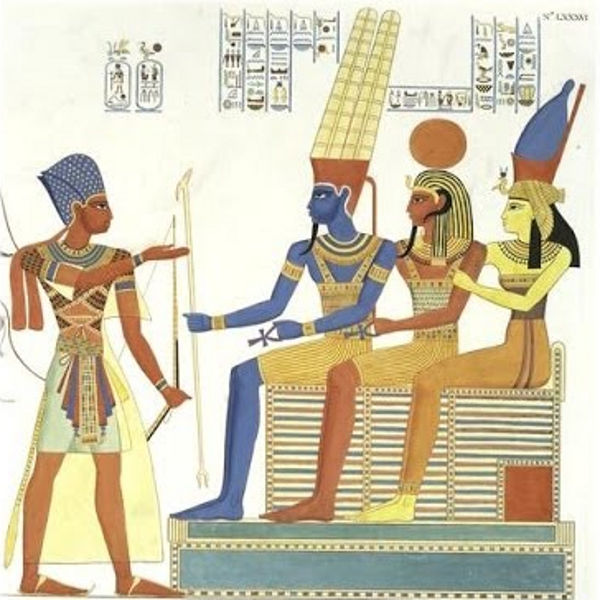
This is why the Levite High Priest had worn a Blue Sapphire (Sphir) stone on his Breast Plate covering his heart and lungs for they represented the word of God.
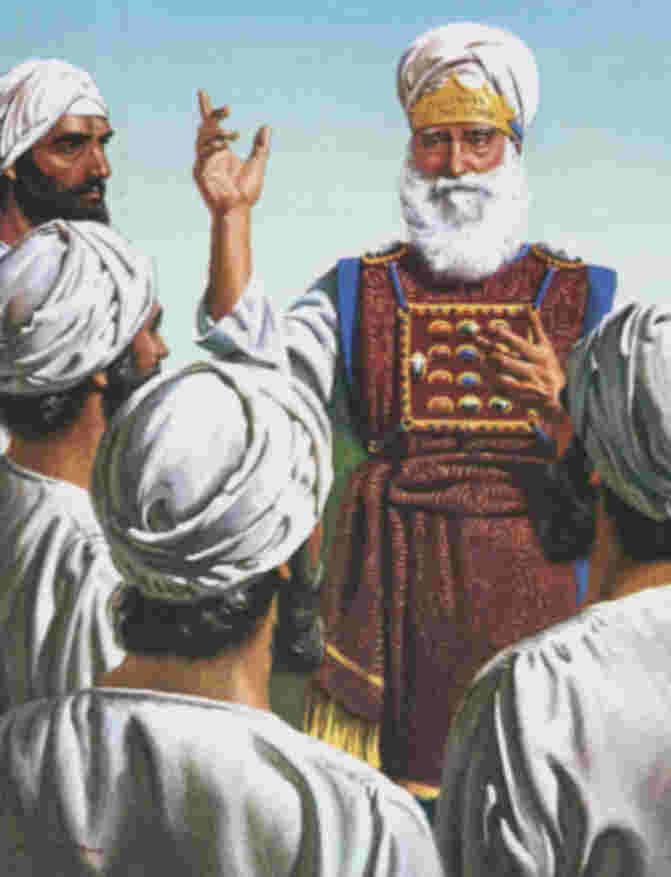
The true meaning of Sepher in Hebrew is written web (Sphir) and it is also listed as a city in the Bible of which Eusebius places in the tribe of Judah between Eleutheropolis and Ascalon.
Irenaeus explains this scientific process of human alchemy in detail when he writes about “Plasmation being the Formation of the Flesh out of the Earth” and to become Wholly or what we would call Holy today would be when the God of Peace sanctifies us wholly ie: “I pray God your whole Spirit, and Soul and Body.”
Irenaeus said, “That is, but when this Spirit mixed with the Soul, ‘is united with the Flesh, by reason of this Effusion (or Infusion) of the Spirit, the Man is made Perfect ‘ and Spiritual [i. e. Immortal.] But if the Spirit ‘ be wanting to the Soul, He is truly Animal, who is ‘ such and being left Carnal, He will be Imperfećt, ‘ retaining indeed the Image [or Impression] in the ‘ Flesh, but not Affuming the Similitude [Likeness] by ‘the Spirit.
“For neither is the Plasmation [the ‘ Formation] of the Flesh [out of the Earth] itself in ‘ itself, the Perfect Man, but the Body of Man, and a ‘ part of Man: Neither is the Soul itself, in itself, the ‘ Man, but the Soul of Man, and a Part of Man. Nor ‘ is the Spirit, Man, for its called Spirit, not Man. But ‘ the Commixtion, [Conjunćtion] and Union of all these, constitutes the Perfect Man.
For this reason, ‘ the Apostle, explaining himself, says, (1 Theff. v.23.) ‘ And the very God of Peace fänétify you wholly; and ‘I pray God your whole Spirit, and Soul and Body “ ‘ be preserved blameless, unto the coming of the Lord “Jesus Christ.
This is was also known as the plasmation or creation of Adam which is reckoned among the generations down through Jesus Christ.
The word plasmatation shows us that as it relates to the creation of Adam and Christ pertaining to plasma is a thing that is formed or molded from clay or wax, an image, assumed form or manner; “A mold or matrix in which anything is cast or formed to a particular shape.” Of plasmatic origin means “plastic or formative; a molded figure, an image or one who forms or creates; a creator.”
Today, science has verified these teachings by clarifying that is plasma is the “fluid part of the blood that is aptly named plasma for its plasticity in molding and forming which the tissues of the body are built up.”
But it is important to note that “not everyone’s spirit on earth is cut of the same mold and or stone” for we are told by the apostle Paul that there are two separate molds for humanity and in Chronicles, there lists a specific people and or tribes who have been molded from the beginning to also become like God as potters with the king.
In reading these various Biblical passages I mention above, you will find that “One mold appears to be of God the potter” referenced above who are said to originate from the inhabitants of Netaim and Gederah who lived there with the king for his work and the “other mold” is the “world around you.”
As it is said in Romans 12:2 where the apostle Paul says, “Do not let the world around you squeeze you into its mold.” And in Chronicles 4:23, “These were the potters and the inhabitants of Netaim and Gederah; they lived there with the king for his work.”
Searching our modern era for clues for the whereabouts of the Holy City of the clay potters of God who are named “Netaim and Gederah,” I have found they were a people of the ancient Kingdom of Judah where Gedor is listed as ancient city in the mountains of Judah (Jos 15:58), and a chief City of the Benjamites resident at Jerusalem (1Ch 8:31; 1Ch 9:37). B.C. 536 or ante.
Looking further into this story, we find in the Hebrew (Phoenician) Bible that the Tribe of Simeon, the Simeonites were said to have gone to the entering in of Gedor in search of pasture for their flocks. They smote and expelled the Meunim, “and dwelt in their stead” (1 Chronicles 4:39).
In 1 Chronicles 4:38, we learn that “These men noted by name were the leaders of their clans. Their families increased greatly and elsewhere more truly as “These were the names of some of the leaders of Simeon’s wealthy clans whose families grew.”
They are collectively described in King James Version as “those that dwelt among plants and hedges.”

The word Netaim is derived from the word Nata or Nat which means to be from, to spring forth, root and sometimes as plant, and or planters. For example, in Italian, nata means born.
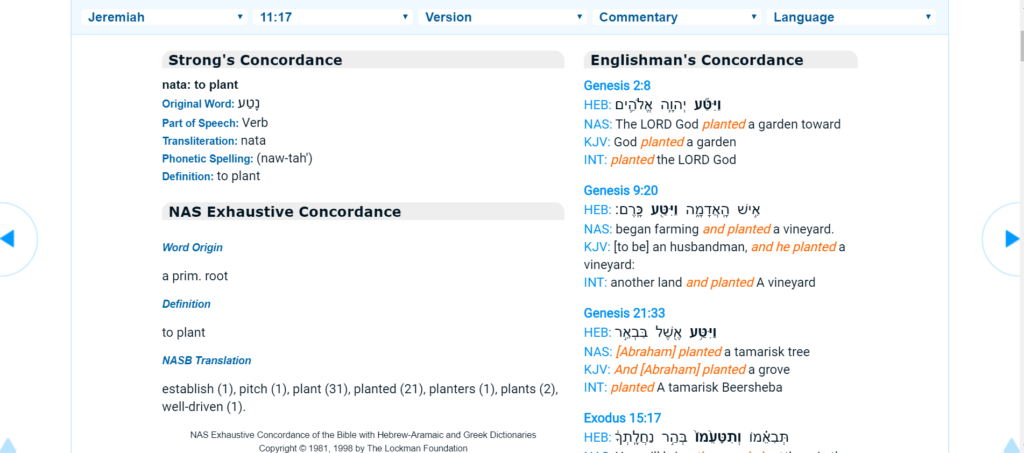
I have found that Gederah was an old common Phoenician and or a Canaanite name that is also spelled Gedor, Geder, Gedar, Gadeira, and or Gedoroth etc. For example, Eusebius calls it Gadeira and Jerome calls it Gadora which was a village in the borders of Jerusalem, near the terebinth. It is probably represented today by Khirbet Jedur, about 7 miles North of Hebron (PEF, III, 313, Sh XXI).
The race of people who hailed from here as referred to as a Gederathite such as “Josabad the Gederathite” (q.v.) belonged (1Ch 12:4); as also “Jeroham of Gedor,” and among the Benjamites were the sons of Jeroham of Gedor (1 Chronicles 12:7) – Joelah and Zebadiah (Obed, Obediah, Bediah, Beda, Widow’s Won) were among the mighty men that joined David in his difficulties at Ziklag (1Ch 12:7). The son of Jeiel of Gibeon, a Benjaminite and an ancestor of Saul (1 Chron 8:31; 9:37).
As I explained in my essay, Abibalus: King Hiram’s Father is the Widow’s Son, King Hiram’s son is 2 Samuel 4:2 to Ishbosheth, who is said to be “Saul’s son,” had two men who were captains of bands: the name of the one was Baanah, and the name of the other Rechab, the sons of Rimmon the Beerothite, of the children of Benjamin (for Beeroth also is reckoned to Benjamin.)
Abibalus: King Hiram’s Father is the Widow’s Son
In the ancient Scripture, the city listed as Beeroth (AKA Berytus, Berith, Beirut, Baruth, and Tyre) was located seven miles from Jerusalem, toward the city of Nicopolis. Beeroth is said to be of the Children of Jaakan (Jachin) and a city of the Gibeonites (Masons) Joshua 9:17; assigned to Benjamin 2 Samuel 4:2.
Eusebius says, Beeroth was seven miles from Jerusalem, toward Nicopolis. Jerome writes Neapolis, or Naplouse instead of Nicopolis or The Holy Village of Ayios Nikolaos.
The Holy Village of Ayios Nikolaos (Saint Nicholas) on Crete
Nicopolis was anciently called Neapolis (Naplouse or Napolose) by Jerome and is listed as a city in Samaria between the Mountains of Gebal and Gerizem approximately 24 miles North of Jerusalem. As you can witness with all names from this time, the city Jerome calls Neapolis is also known as Nicolopolis and I have found it also under the names of Sychar, called also Sichem, and Shechem.
The Nicolaitans come from the city known as Nicopolis or Nicomedia. Nicopolis in Greek: Νικόπολις Nikópolis, means “City of Victory” or Actia Nicopolis. Strabo states that it was founded by Augustus Caesar.
The Nicolaitans
THE TRIBE OF SIMON AND THE SANHEDRIN
Biblically speaking as it relates to the Tribe of Judah is the family of our Lord, this location could be considered to be both the most Holy place on earth where possibly the bones of the first Apostles would be found and also could be called the “First Supreme Court of Judah” known as “the Sanhedrim.”
The Sanhedrin or Sanhedrim was the supreme judicial council at the Temple of Jerusalem, which was the seat of the Sanhedrin. Two of the most important men to rule from here are Jonathan and his brother Simon who ruled after as found on the coins of Simon and his successors.
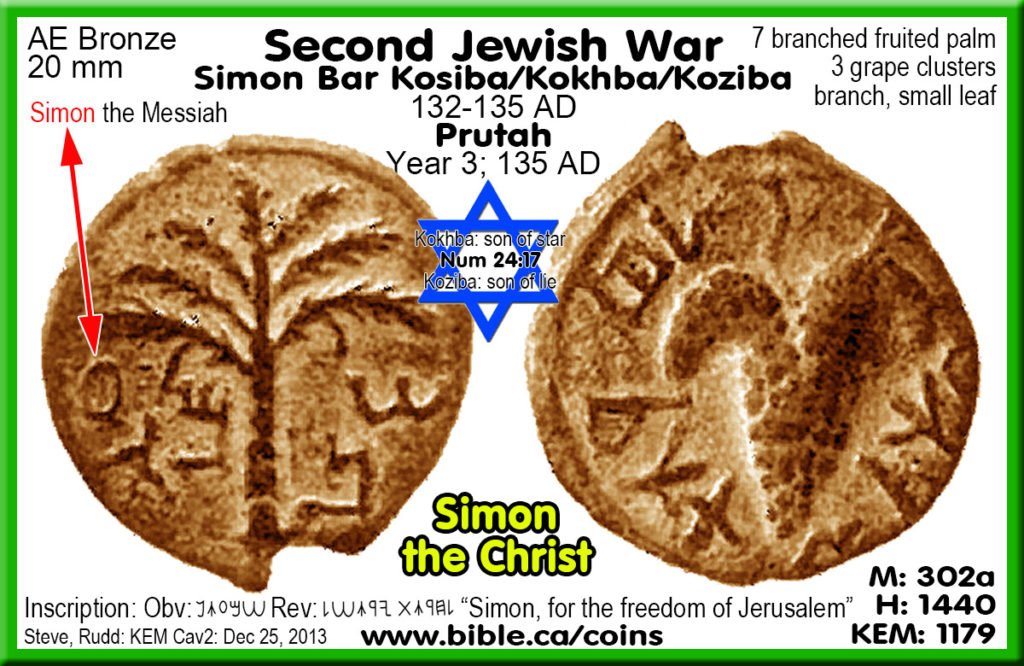
When the Sanhedrin (Acts iv. 7) asked Peter, “By what power or by what name have ye done this?” Simon replied, “By the Name of Jesus Christ of Nazareth doth this man stand here before you whole.”
As this relates to the Ancient Gnostic mythos and the Abrahamic religions, Jesus and mankind, our bodies act as shells or unholy husks that serve as plasma or molds for the spirit that controls our bodies whether it be the Counterfeit Spirit or the Holy Spirit.
To become a Savior of the human race, the spirit MUST come from the true God in order to identify as the “Holy Spirit” for you will know them by their works.
MOE’S COMMENTARY
The Matrix in which you and I live was set up from everlasting in Psalm 2:6, “I have set my King upon my holy hill” “to pour forth” (as of molten metal), then “to put down,” “to appoint or establish” the Wisdom was from everlasting exalted as ruler and disposer of all things from the beginning; i.e. before the world was begun to be made.
Since the beginning of the Ages, humans have sought to understand these immortal laws that govern the world and themselves. At first, they had errored in thinking that it was man who was the arbitrator, legislators, and final judge who would determine their fates.
As time progressed and the cosmology of the human race had further developed through the knowledge of who can be called “God’s anointed” beings that have come to us in the form of Holy Men, Sages and or Saints. These Secret Agents molded by God from the first sentient beings sent to us from the netherworld with a message that it is not man who decides the fate of humanity.
In fact, it is the immortal microscopic legal representatives in the unseen world that both inhabit our bodies and the ride the filamentary dark matter connecting us all to one another by carrying the light of the message of God to those with “an eye” to see.
We can say that these special beings have been ordained with a task and or a crown to act as intermediaries between man, God, and both the good and bad Demons who they govern.
We learn in Ephesians 2:10; “God has made us what we are, and in our union, with Christ Jesus, he has created us for a life of good deeds, which he has already prepared for us to do.”
Meaning it wasn’t man or a priest who anointed Jesus, it was God working through plasmatation and it wasn’t Jesus who was the spirit, he was just the firstborn man of the flesh verified by DNA as one of the Old Ones who became wholly through God by transmuting his Spirit, Soul, and Body into the Holy Communion to become the “Perfect Man” whose ideas are obviously from the Holy Spirit and because he walked the talk and live the Word, he was ultimately judged by his fellow Brethren to have been the savior.
As this relates to the Ancient Gnostic mythos and the Abrahamic religions, Jesus and mankind, our bodies act as shells or unholy husks that serve as plasma or molds for the spirit that controls our bodies whether it be the Counterfeit Spirit or the Holy Spirit.
To become a Savior of the human race, the spirit MUST come from the true God in order to identify as the “Holy Spirit” for you will know them by their works.
This is why Jesus is from the Tribe of Judah which is where we get the English word idea which is originally derived from the old Greek oida, eido, eidomen, and oidamen and later as Idaean, Judiean, Judean, Juda, and or Judah. As I explained in my article, “Jesus: The Tribe of Idea (Judah),” https://www.gnosticwarrior.com/tribe-idea.html
This is what it says in Scripture that God anointed Jesus with the Spirit so that the Spirit might anoint believers with salvation.
As St. John says (John 1:1), “In the beginning was the Word;” and Christ prays, “Glorify thou me with thine own self, with the glory which I had with thee before the world was” (John 17:5).
There is one body and one Spirit—just as you were called to the one hope that belongs to your call – one Lord, one faith, one baptism, one God and Father of all, who is overall, and through all and in all. Eph. 4:4-6
MORE MOLDED BIBLE VERSES FOR GOD TRUE BEGOTTEN SONS
Job 33:6
Look, I am just like you in relation to God; I too have been molded from clay.
Job 38:14
Like clay is molded by a signet ring, the earth’s hills and valleys then stand out like the colors of a garment.
Rom 8:29
For those whom He foreknew [of whom He was aware and loved beforehand], He also destined from the beginning [foreordaining them] to be molded into the image of His Son [and share inwardly His likeness], that He might become the firstborn among many brethren.
Rom 9:20
On the contrary, who are you mere man that you are to talk back to God? Can an object that was molded say to the one who molded it, “Why did you make me like this?”
Gal 4:19
My little children, for whom I am again suffering birth pangs until Christ is completely and permanently formed (molded) within you.
SOURCES:
ART: Brendan Flynn
Moe is the founder of GnosticWarrior.com. He is a father, husband, author, martial arts black belt, and an expert in Gnosticism, the occult, and esotericism.
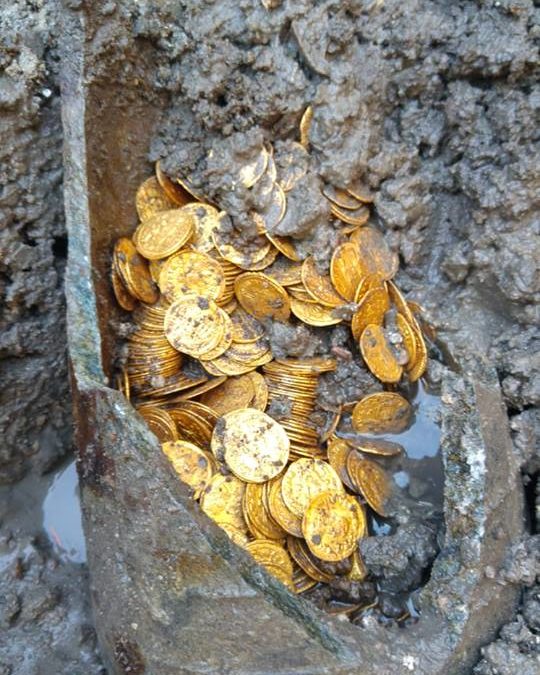
by Moe | Feb 3, 2020 | Freemasonry, History of the Brotherhood, Latest Media
The sleepy city of Como in Northern Italy has never really garnished much fanfare when it comes to modern history buffs of ancient Roman history but in the last few years, it has come back onto the radar of archaeologists after a group of workers made an incredible discovery when they found a massive treasure of gold coins and artifacts that originate from the time of what appears to be the ancient epicenter of a global Masonic Empire.
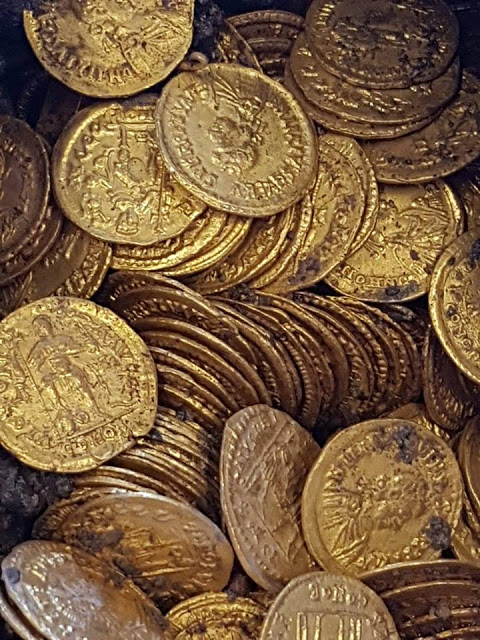
In 2018, the Italian Minister for Culture announced the findings of hundreds of Roman gold coins in Northern Italy unearthed at the site of an old theatre in Como.

The discovery was made in the basement of the old Cressoni theatre by workers who were renovating the building that was built in 1870 and was later converted into a luxury home and a cinema, but it has remained abandoned since 1997.

According to an article posted on CNN, rare coins expert Maria Grazia Facchinetti said that whoever buried the jar did so “in such a way that in case of danger they could go and retrieve it.”
The old gold coins show the era of when they were made with beautiful engravings of late the Roman emperors Honorius, Valentinian III, Leon I, Antonio, and Libio Severo, which has led people like Facchinetti to believe that “the owner is not a private subject, rather it could be a public bank or deposit.”
“They were stacked in rolls similar to those seen in the bank today,” she said, adding the coins have engravings about emperors Honorius, Valentinian III, Leon I, Antonio, and Libio Severo “so they don’t go beyond 474 AD.”
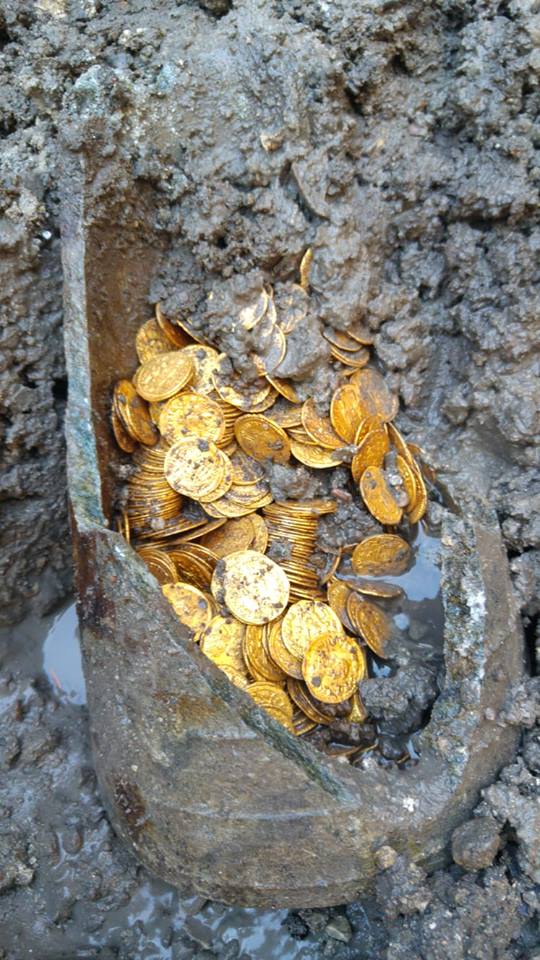
One of Como’s archaeology superintendents, Luca Rinaldi, told London’s The Times that the value of the coins is inestimable, and that “we are talking about an exceptional discovery.”
Modern Freemasons will find this story particularly interesting given the fact that these are their true ancestors who were an international Fraternity formed in Northern Italy under the patronage of the Father of the Roman Empire – Julius Caesar in 59 BCE. They were mainly imported from the Greco-Egyptian Empire into Rome after he had conquered the East in what appears to be the beginning history of a massive worldwide Roman Masonic building project.
You can learn more about these Roman Masons in my article, The Comacine Masters’ Global Masonic Knot.
Of course, a global project to build these massive Roman structures would require a lot of workers, materials, and money that I contend based on my research that they formed guaranteed pay structures for the Brotherhood during a time of chaos in order to keep them paid, fed, and housed which made them staunch loyalists to the Roman cause.
As Albert Mackey records what author Quaternal de Quincy, in his Dictionary of Architecture, notes under the heading Comacines;
“to these men who were both designers and executors, architects, sculptors and mosaicists, may be attributed the Renaissance of art and its propagation in the southern countries, where it marched with Christianity. Certain it is that we owe to them that the heritage of antique ages was not entirely lost, and it is only by their tradition and imitation that the art of building was kept alive, producing works which we still admire and which become surprising when we think of the utter ignorance of all science in those Dark Ages.” (2)
He further writes about they were the first liberals given freedom which they earned and also the money and pay they were guaranteed;
“These bodies in order to enjoy exclusive exercise of their profession, and that its profits should be secure to them, not only by law, but by the inability of others to violate it, by degrees made their business, or craft, as they called it, a profound mystery from the world at large, and only suffered their own apprentices to be initiated in its higher branches and improvements, most gradually;
and in every place where a variety of paths of industry and art were struck out, these crafts, these corporations, these masterships and these mysteries became so universally prevalent, that not only the arts of a wholly mechanical nature, but even those of the most exalted and intellectual nature—those which in ancient times had been considered the exclusive privilege of freemen and citizens, and those dignified with the name liberal—were submitted to all those narrow rules of corporations and connected with all the servile offices of apprenticeship.”
Albert Mackey notes how during the rule of the German Lombards, that their influence, landmarks, and banking system had spread all around Europe
Mackey had written;
“The Lombards—in the space of two short centuries, producing trade, in legislation, in finance, in industry of every description, new developments so great, that from them, and from the regions to which they attach their names, has issued the whole of that ingenious and complex system of bills of exchange, banks, insurance, double-entry bookkeeping, commercial and marine laws and public loans, since adopted all over Europe—all over Europe retaining, in their peculiar appellations the trace and landmarks of their origin—and all over Europe affording to capital and commerce an ease of captivity and a security unknown before.” (2)
These Old Roman Masons and Philosophers weer known as the Comacine Masters (Magistri Comacini) who hailed from what appears to be an old favorite resort town of the Greeks and Cretans called Lake Como. It was under the rule of Julius Caesar that the name was later changed to “Novum Comum” in order to honor this “international commune of Masons” which could be compared in our modern-day to a city in the U.S. called Washington DC that was founded and is ruled by FreeMasons who honor the same Roman symbology of their ancestors.
The Comacine Masters (Magistri Comacini) were originally part of a crew that Julius Caesar had recruited in a wave of approximately 6,000 immigrants and 500 illustrious Greek and or possibly Phoenician/Cretan families who were gifted his patronage. These were the wisest of philosophers, the best Masons, and the most trustworthy workers that Caesar would incorporate into his Universal Empire such as Pliny the Elder.
You will find that the Lost Treasure of the Comacine Masons is currently being held in a restoration laboratory in Milan in order to learn even more about their cultural and historical significance. I suggest that these archaeologists look to the Comacine Masters (Magistri Comacini) who may one day claim what is ritefully theirs under Roman Law and the Rule of the Caesars.
SOURCES:
1. Italian Minister of Culture
2. CNN
3. An Encyclopedia of Freemasonry and Its Kindred Sciences …, Volume 1 By Albert Gallatin Mackey, William James Hughan
Photos Credit: Mibac
Moe is the founder of GnosticWarrior.com. He is a father, husband, author, martial arts black belt, and an expert in Gnosticism, the occult, and esotericism.
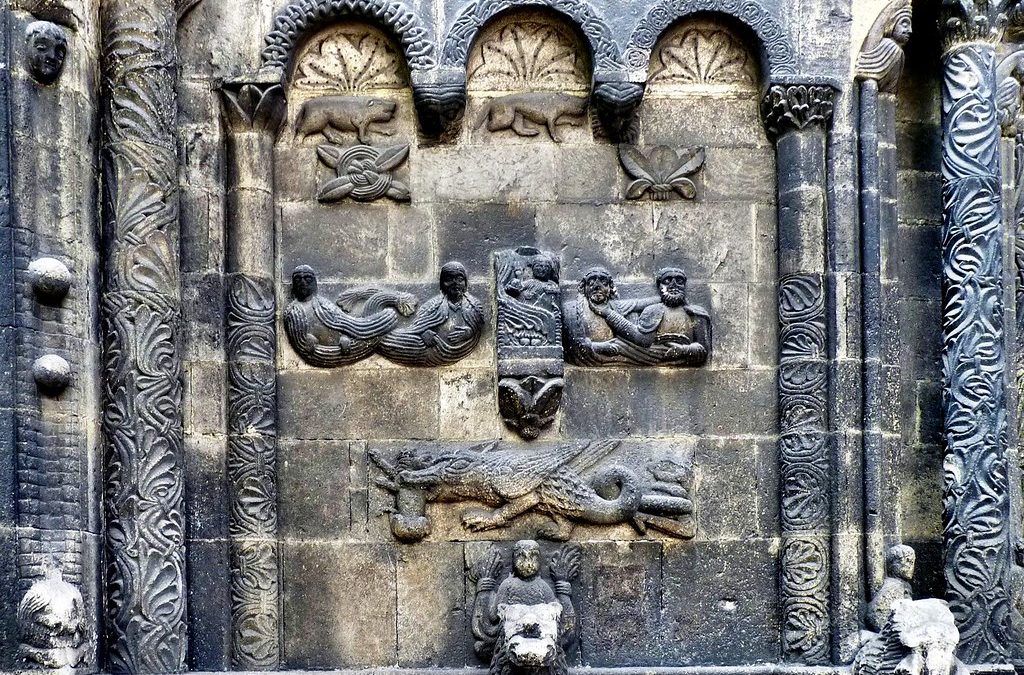
by Moe | Feb 2, 2020 | Freemasonry, History of the Brotherhood, Latest Media, Meaning of Symbols
You will find that one of the most ancient and esteemed of all Freemasonic symbols is also the least known by many modern Masons. The symbol I speak of you will discover is not relayed to us in words or in history books, but can be found etched into the immortal stones of some of the Western world’s most prestigious Christian cathedrals.
But before we reveal the symbolism, we first must understand the history and mysticism that comes from the ancestors of modern-day Masons who were known in ancient times as the Comacine Masters (Magistri Comacini).
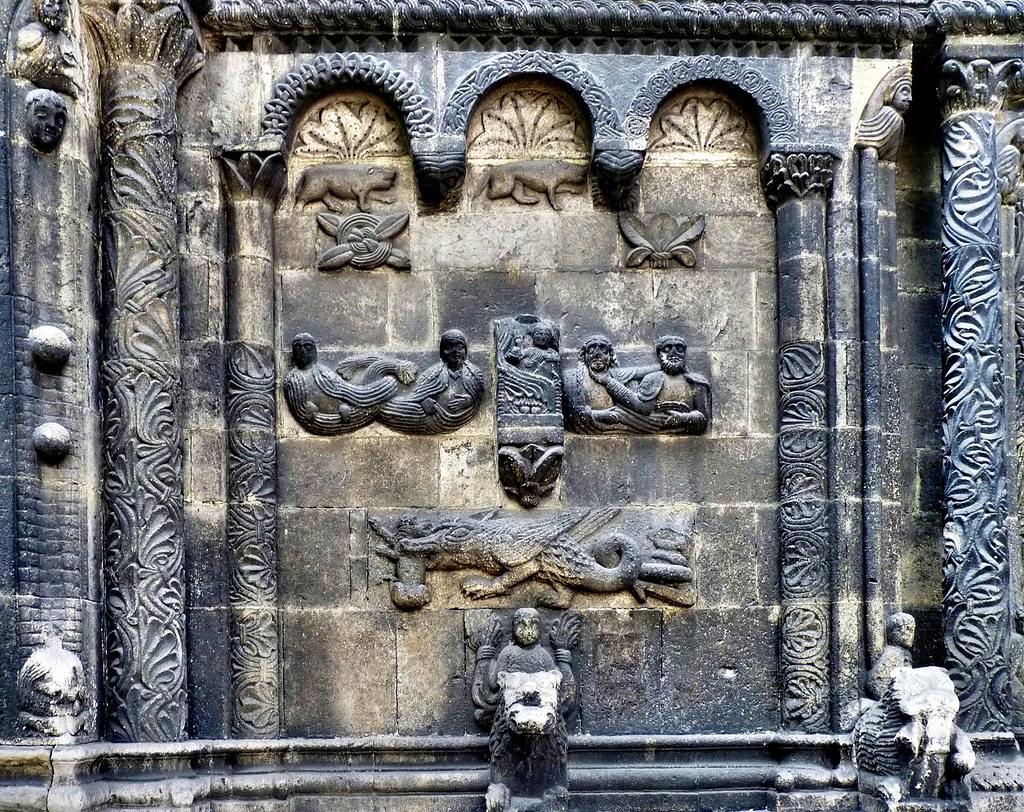
The Comacini derive their name from the Old Roman ruled colony called Novum Comum founded in 59 BCE by the Father of the Roman Empire – Julius Caesar. It was Julius who wisely imported 6000 colonists, among whom it was said there were 500 illustrious Greek or possibly Phoenician/Cretan families by which the population was formed.
One of these families was that of Plinius Secundus, also known as Pliny the Elder who became a “Roman Citizen” and I believe his family originally immigrated to Italy from either Athens or Crete and settled in Lake Como with those first colonists which also happened to a favorite resort of the Greeks who traveled there often;
Freemasonic historian, Albert C. Mackey had written about the younger Pliny having a villa there that was made by a mane name Mustio who was a Comacine architect. Mackey writes;
“It is usual to record that Como was the birthplace of the elder and younger Pliny. The younger Pliny had a villa here called Comedia and was much interested in building the city having founded baths, a library, and aided in charity for the support of orphan children.
Of the many letters of the younger Pliny that remain, one is to his builder, Mustio, a Comacine architect, commissioning him to restore the temple of the Eleusinian Ceres, in which, after explaining the form of design he wished it to take, he concludes.”
Mackey said; “There are found many interesting intrench remains of early carvings of the Comacine or Solomon’s Knot (see the illustration of parapet). On a site of an earlier church stands the present Cathedral of Como, which is built entirely of marble. (1)
Like Mackey, I have also found Comacine Masonic Master’s Monuments that still stand to this very day all over the world such as Greece, Italy, Ireland, England, Germany, Switzerland, and Russia. An International bridge of wisdom hidden in stone connecting all Masons and also the Christian heritage regardless of their race, religion, and or nationality.
This Cosmopolitanian fact would extend into the religious world given the fact that the Comacine and Frank Freemasons were the main Operative Masons since the time Saint Augustine and Saint Bede to be employed by the Roman Catholic Church in the building of all their stone cathedrals. Saint Bede, Doctor of the Catholic Church and Father of English History describes these events as it relates to his time in the book, The historical works of the venerable Bede;
“After an interval of not more than a single year from the foundation of the monastery, Benedict crossed the ocean and passed into Gaul, when he made inquiry for masons who could build him a church of stone after the Roman style, which he always loved. These he obtained, and brought them home with him; and such zeal in the work did he exhibit—out of his love for the blessed Peter, to whose honour he was doing this—that in the course of one year from the time when the foundations were laid, the church was roofed over, and within it you might have witnessed the celebration of masses.”
When the work was drawing to its completion, he sent messengers to Gaul to bring over glassmakers (a kind of workman hitherto unknown in Britain) to glaze the windows of the church, and its aisles‘ and chancels.”
Bede further writes; “And so it happened that when they came they not only accomplished that particular work which was required of them, but from this time they caused the English nation to understand and learn this kind of handicraft, which was of no inconsiderable utility for the enclosing of the lamps of the church, or for various uses to which vessels are put. Moreover, this religious trader took care to import from the regions beyond the sea, if he could not find them at home, whatever related to the ministry of the altar and the church, and to holy vessels, and vestments.”
Freemasonic historian and author, Joseph Fort Newton, summarizes this history succinctly in his early 20th-century publication, The Builders, Newton had written;
“With the conquest of Britain by the Romans, the Collegia, without which no Roman society was complete,made their advent into the island, traces of their work remaining even to this day. Under the direction of the mother College at Rome, the Britons are said to have attained to high degree of excellence as builders, so that when the cities of Gaul and the fortresses along the Rhine were destroyed, Chlorus, A. D. 298, sent to Britain for architects to repair or rebuild them. Whether the Collegia existed in Britain after the Romans left, as some affirm, or were suppressed, as we know they were on the Continent when the barbarians overran it, is not clear.
Probably they were destroyed, or nearly so, for with the revival of Christianity in 598 A. D., we find Bishop Wilfred of York joining with the Abbott of Wearmouth in sending to France and Italy to induce Masons to return and build in stone, as he put it, “after the Roman manner.”
This confirms the Italian chroniclists who relate that Pope Gregory sent several of the fraternity of Liberi muratori with St. Augustine, as, later, they followed St. Boniface into Germany.
Again, in 604, Augustine sent the monk Pietro back to Rome with a letter to the same Pontiff, begging him to send more architects and workmen, which he did.
As the Liberi muratori were none other than the Comacine Masters, it seems certain that they were at work in England long before the period with which the OLD CHARGES begin their story of English Masonry. Among those sent by Gregory was Paulinus, and it is a curious fact that he is spoken of under the title of Magister, by which is meant, no doubt, that he was a member of the Comacine order, for they so described their members; and we know that many monks were enrolled in their lodges, having studied the art of building under their instruction.
St. Hugh of Lincoln was not the only Bishop who could plan a church, instruct the workman, or handle a hod. Only, it must be kept in mind that these ecclesiastics who became skilled in architecture were taught by the Masons, and that it was not the monks, as some seem to imagine, who taught the Masons their art. Speaking of this early and troublous time, Giuseppe Merzaria says that only one lamp remained alight, making a bright spark in the darkness that extended over Europe:
It was from the Magistri Comacini. Their respective names are unknown, their individual works unspecialized, but the breadth of their spirit might be felt all through those centuries, and their name collectively is legion. We may safely say that of all the works of art between p. 115 A. D. 800 and 1000, the greater and better part are due to that brotherhood—always faithful and often secret—of the Magistri Comacini. The authority and judgment of learned men justify the assertion.” (2)
According to Albert Mackey, for this Great Work, Freemasons are indebted to the Catholic Church and these Masons for building these Roman Churches. Mackey had said, “We Speculative Masons should give full credit to the Roman Catholic Church for employing and fostering our Operative Brethren through many centuries and making possible Speculative Freemasonry of to-day, even though the Church is now our avowed enemy.”
These French Comacine masons that Bede mention I have found were known for their opus gallicum (Latin for “Gallic work”). This was a technique where precise holes were created in stone masonry for the insertion of wooden infrastructure. These building techniques are mentioned in Julius Caesar’s De bello Gallico and they were used extensively in church architecture.
In researching this history, it appears that the Comacine Masters had really gained momentum during the invasions of Rome by the Lombards of Germany when they gained their patronage. According to Mackey;
“The Lombards, who had come from northern Germany and settled in northern Italy in 568, at once began to develop along many lines which made Lombardy known all over Europe—the result of which influence Europe feels to-day. They developed along lines which in our every-day parlance may be called business.
They were not primarily architects or builders, and they employed the Comacines for this kind of work and it was the Comacines who developed what is known today as Lombard architecture, covering a period that we may roughly put as from the seventh century to the Renaissance.
The first to draw attention to the name Magistri Comacini was the erudite Muratori, that searcher out of ancient manuscripts, who unearthed from the archives an edict, dated November 22, 643, signed by Rotharis, in which are included two clauses treating of the Magistri Comacini and their colleagues. ” (1)
In an old publication, the Journal of the Royal Institute of British Architects, Volume 6 it says;
“Our earliest documentary token of the corporate activity of the Guild is to be found in an edict of King Rotharis, dated 643, and brought to light by the archaeologist Muratori, which contains two clauses relating to the conditions for compensation and liability for accidents on buildings under the charge of the Magistri Comacini.
These are sufficient to prove their existence as a recognized body in the seventh century. Their origin has been ascribed by various theorists to Rome, Byzantium, and the East. The Germans, I believe, have been the chief supporters of the theory of Byzantine origin, while that which points to an Oriental source depends upon the internal evidence in the works of the Guild of supposed Eastern symbolism in certain forms of decoration. On the whole, the view that the Comacine masters are the descendants of the Roman collegia is the best attested and the most inherently probable.
It is backed by the prevalence of what we may call Comacine work in many of the so-called Lombard and pre-Lombard churches of Rome, in one of which, the Sub-Church of San Clemente, a fresco of the eighth century represents what Leader Scott claims to be a Magister in the act of directing his subordinates.
Cesare Cantu, in his Storia di Como, perhaps in jealousy for the special honour of Como, looks upon the Comacine Magistri as the parents of modern Freemasonry. Whether this be so, or whether the Comacine masons were only a link in a still longer chain of succession, there is no doubt as to the points of similarity in the Comacine constitution and that of the Freemasons.” (3)
Looking further into this lost history, I found some fascinating information shared by the authors, J. G. Findel, Carl van Dalen in a German book on the History of Freemasonry. They write;
“Upon the overthrow of the Republic, when all other corporations lost their privileges, owing to the despotism of the Emperors, the thirst of the rulers for splendor and renown caused the collegia to be confirmed in nearly all their former rights‘ and privileges. Three members were at least required to form a college, and no one was allowed to be a member of several colleges at the same time.
Lay or amateur members (patrons) were admitted; the corporations held their meetings in secluded rooms or buildings exclusively appropriated to that purpose, and most of them had their own schools for the instruction of apprentices and lower grades of workmen. They had also their own peculiar religious ceremonies and priests, and an exchequer belonging to the corporation, an archive, and their own seals.
The members took an oath mutually to assist each other; indigent members received relief, and on their demise were buried at the expense of the corporation. They kept registers of the members, some of which are still extant; they had also their records, their masters (magistri), wardens (decuriones), fellow-crafts and apprentices, censors, treasurers, keepers of archives, secretaries, and serving brethren.”
The authors conclude, “Their tools and implements had, besides, a symbolical meaning, and in religious matters they were tolerant.” (4)
The Grand Lodge Bulletin, Volumes 15-17 details how they were not ordinary workmen, but true artists whose symbol was King Solomon’s Knot and when the Comacine were driven out of Rome, they took refuge in Lombardy, Northern Italy;
“When the Collegia were driven out of Rome, they took refuge in Lombardy, and the Comacine Masters were almost certainly their successors. Those Masters were not ordinary workmen. They were artists, and to them were due to the changes in styles of architecture in Europe during the cathedral-building period, as Hallam tells us in his study of the Middle Ages. For a long time these changes of style, appearing simultaneously everywhere, puzzled students. Further knowledge of this powerful and wide-spread order explained it.
They had their lodges, each with its master and wardens; their oaths, tokens, grips, and passwords, which, as Hallam says, formed a bond of union stronger than legal ties. They wore white aprons and gloves.
“King Solomon’s Knot” was one of their emblems, and the endless, interwoven cord another—but, later, the lion’s paw became their symbol. With the decline of Gothic architecture their order seems to have declined, or, rather, coalesced with the other guilds of masons.” (5)
The Quatuor Coronati Masonic Research Lodge details this time period showing that it was under the patronage of Charlemagne that the Comacine had truly flourished into an international order connecting Masons in Italy, France, and Germany and how the Bavarian Catholic Illuminatus, Albertus Magnus has helped strengthen their bonds by his writings. They had written;
“It was under the widespread rule of Charlemagne that the Comacines began their many emigrations. Adrian I. wrote for Magisiri from the north of Italy to execute works in Rome, and still existing Comacine intricacy are a proof of their work there in the 9th “century. Charlemagne is known to have brought marbles from Italy for his church at Aix-la-Chapelle, and the Lombard character of its style suggests that he also imported architects, who could scarcely have been other than the Comacine Masters.
In the troublous times which succeeded the withdrawal of the Carlovingian dynasty from Italy the Guild found more employment in building castles than churches, and it was not until the distant warfare of the Crusades left Italy comparatively tranquil that the art of sculpturesque architecture revived. Leader Scott gives the genealogy of the style as follows:
“ First the Comacines continued Roman traditions as the Romans continued Etruscan “ ones; next, they orientalized their style by their connection with the East through “ Aquileia, and the influx of Greek exiles into the Guild. Later came a different influence “ through the Saracens into the South, and the Italian Gothic was born.”
Independently of Charlemagne the great building guild of the Middle Ages had another connection with France through the Normans. The old chronicles shew that S. Guillaume, Abbot of S. Benigne in Dijon, a Lombard by birth, sent to his own country for Masters to build his monastery there, and further that he was invited to Normandy by Duke Richard II., where he stayed twenty years erecting monasteries and sacred buildings, and that when William of Normandy conquered England the round arched style passed ‘over with him.
Certainly the oldest churches both in Normandy and England have great affinity to Lombard buildings, the chief difference being that the roof has a higher pitch, necessitated by the damp climate. Leader Scott adduces evidence to show that at the time of the Norman occupation of Sicily there was a large emigration thither of members of the Comacine Guild; which accounts for the architecture there having so much more affinity to Italian than to French-Norman forms; and it also accounts for the Saracenic cast which Lombard architecture took after that era.
In Germany the style of buildings, such as are found at Cologne, Worms, Speyer and Zurich, seems to prove that Lombard influence preceded the native Gothic architects who subsequently developed the pointed style. Leader Scott’s theory is that in their earlier emigrations the Comacine Masters founded the usual lodges; that the Germans entered their schools and became Masters in their turn, and eventually split off from the universal Masonic Brotherhood, forming a separate national branch. Albertus Magnus, a Bavarian who studied at Padua, strengthened the link between Germany and Italy.” (6)
BEFORE THE GERMAN REICH, THERE WAS THE GREEKS AND PHOENCIANS
If we are to look back to the history of the first Comacine Masters under Julius and Augustus Caesar, we will find that they were visiting and building in Germany since that time and even Pliny the Elder who at the age of about 23 went to Germany, where he served under L. Pomponius Secundus to the command of a troop of cavalry (praefectus alae), and afterward wrote a memoir of Secundus. It was said that Pliny had traveled over most of the frontier of Germany and the Danube where he composed over 20 books including his treatise de Jaculatione equestri and a history of the Germanic wars.
When Pliny went back to Rome it was said to be during part of the reign of Nero when he spent his day in retirement. (7)
This Comacine connection to Pliny and Nero I detail in my 2nd follow up article, “The Lost Masonic Treasure of the Comacine,” where I will put forth research of a possible lost hoard of gold that appears to belong to the exact time period and to Ceasar’s Comacine Masters
THE COMACINE LOST SYMBOL
The symbol that ties Masons to one another through the Ages is called the “Comacine Knot” and also “Solomon’s Knot.” In Latin, sigillum Salomonis, meaning the “Seal of Solomon” to represent the “immortality and eternity” of their Great Work and also time, motion, and the powers of ancient hidden forces that govern our universe.
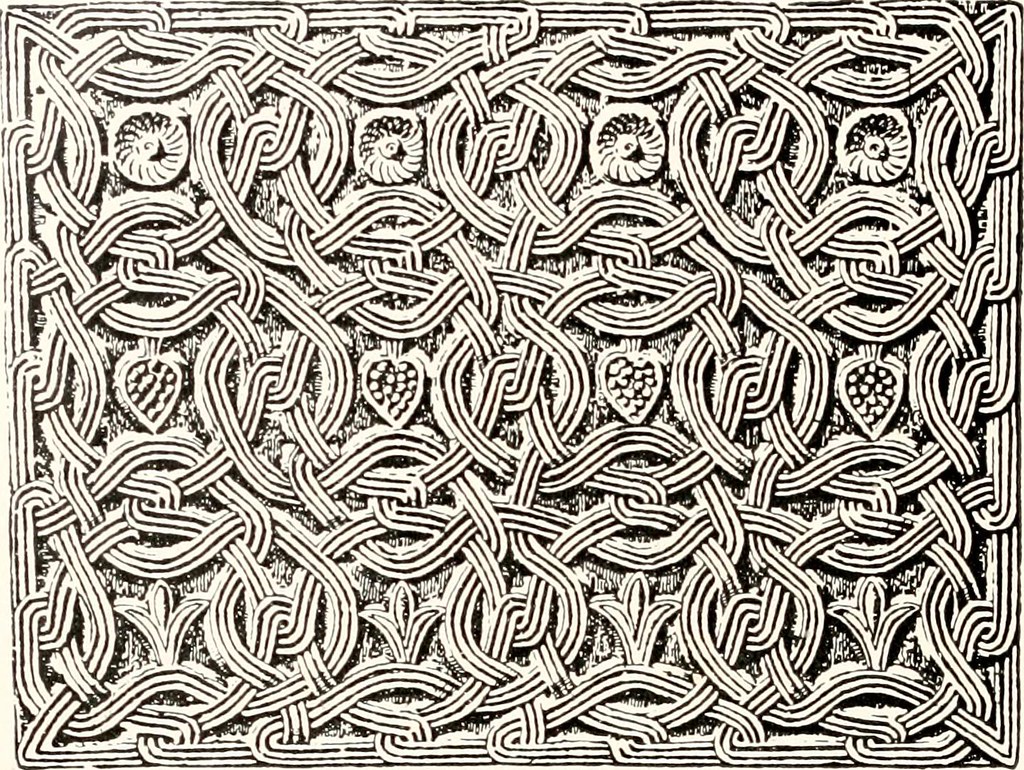
Here is an excerpt from the Royal Society of Antiquaries of Ireland showing the importance of this symbol;
“The existence of the guild under the Longobard rule having been proved, and their intimate connexion with and responsibility for the erection of the most famous buildings of the Lombardic type, the author goes on to show the numerous foreign emigrations of the Comacine Masons and establishes the Norman and German link.
An interesting chapter on the origin of Saxon architecture by the author’s brother, the Rev. W. Miles Barnes, tends to show that the Comacines were the survival of the Roman Collegia, and that when St. Augustine came to England he brought architects and masons with him, and that these would be chosen from the Comacines then firmly established under the patronage of the Popes.
For Irish archaeologists, the most interesting theory is that developed in the chapter on the Pound Towers and Crosses of Ireland, whereby a Comacine influence is shown in the ornament of our Crosses. The interlaced work, so long considered as peculiarly Celtic, is shown to be purely Comacine, and whether known as the Italian intreccio, meandro, or “Solomon’s knot,” it is the distinguishing badge of the Comacine Masons.
The author, in this connexion, says on page 82:
“In studying the scrolls and geometrical decoration of the Comacines, one immediately perceives that the intreccio, or interlaced work is one of their special marks. I think it would be difficult to find any church or sacred edifice, or even altar of the Comacine work under the Longobards which is not signed, as it were, by some curious interlaced knot or meander, formed of a single tortuous line. The Comacine believed in his mystic knot; to him, it was a sign of the inscrutable and infinite ways of God whose nature is unity. The traditional name of these interfacings among Italians is ‘Solomon’s knot.'” (8)
To add to the story of this symbology, I interpret it as an interlacing global knot of living human stones who have been imbued into the very stones that they put their heart and souls into. A Testament of the Masonic will to one day create a worldwide temple of Wisdom under God and our Lord allegorically referred to in the ancient teachings as “Solomon’s Temple.”
It is in the meaning of Comacine that all Freemasons of the past, present, and future must realize that tie them together in a multi-racial, multi-ethnicity, and multi-national corporation of operative artificers. In my articles on their Capitals named Tyre, I list many of their major Masonic cities starting in Egypt then to the West in Crete and into Europe.
The Knot of the Comacine reveals to us a compound word comprised of the words “com, a and cine” that constitute the ancient ethos of the order.
The word com means “with, together, unite” and derivative words with similar meaning would be words like commune, community, comrade, commissar, communist, etc.
The meaning of the word ‘a’ is “to identify a thing or person and used to indicate membership of a class of people or things”
The last word in Comacine is cine which means tribe, clan, kindred, or Brothers.
It is derived Anglo-Saxon Cynn, Old English Kin, Irish Cine, Scotch Gaelic Cinneadh or Cinne, and Welsh Cenell derived from a root Cinn, to grow or increase, and meaning the increase or growth of a family, tribe or clan by successive generations.”(9) Also cennan; German kennen, to know, kindred; acquaintance: kith and kin, blood relations; friends and relations. (10)
Words derived from this Brotherhood are kind and kindness ie: goodwill and benevolence. (11)
SOURCES:
1. ENCYCLOPEDIA OF FREEMASONRY AND ITS KINDRED SCIENCES by ALBERT C. MACKEY M. D.
2. The Builders, by Joseph Fort Newton, [1914]
3. History of Freemasonry – Translated from the second German edition By J. G. Findel, Carl van Dalen
4. Journal of the Royal Institute of British Architects, Volume 6
5. Grand Lodge Bulletin, Volumes 15-17
6. Ars Quatuor Coronatorum: Being the Transactions of the Quatuor …, Volume 12
7. A Classical Dictionary of Greek and Roman Biography, Mythology and Geography By William Smith
8. Journal By Royal Society of Antiquaries of Ireland
9. Proceedings of the Society of Antiquaries of Scotland, Volume 32 By Society of Antiquaries of Scotland
10. The Encyclopaedia Britannica: A Dictionary of Arts, Sciences -Volume 4
11. A Dictionary of the English Language By James Stormonth, Philip Henry Phelp
Moe is the founder of GnosticWarrior.com. He is a father, husband, author, martial arts black belt, and an expert in Gnosticism, the occult, and esotericism.
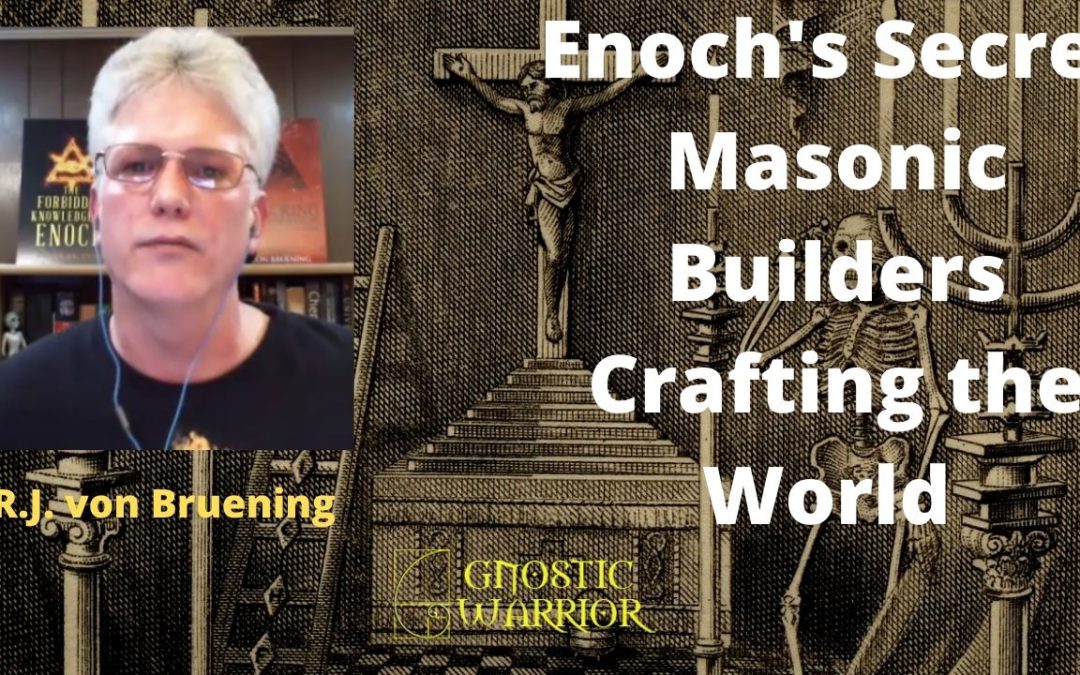
by Moe | Jan 31, 2020 | Freemasonry, Gnostic Warrior Podcast Archives, Latest Media
Notice: Trying to get property 'ID' of non-object in /home/nginx/domains/gnosticwarrior.com/public/wp-includes/link-template.php on line 394
Notice: Trying to get property 'ID' of non-object in /home/nginx/domains/gnosticwarrior.com/public/wp-includes/link-template.php on line 409
R.J. von Bruening
In this episode of the Gnostic Warrior Radio Show and Podcast I have the pleasure of interviewing an expert on the Book of Enoch and author, R.J. von Bruening who takes us on a fascinating journey into the mystical esoteric symbolism buried within the ancient pages of the Book of Enoch.
Since ancient times, the Scribes have always had their hands in the creation and managing of an empire and the secrets of a mysterious esoteric religion that has been operating its lights within the shadows of humanity.
R.J. also explains how their secret societies and teachings have been encoded into symbolism for millennia. Learn how that about the before and during the collapse of the Roman Empire when the Roman College Artificers began retreating to the city of Como in Northern Italy and how they became known as the Comacine Masters.
Author R.J. von-Bruening is a passionate researcher of the recondite knowledge of the occultic arts, specializing in the mystical esoteric symbolism and its relationship to the Book of Enoch, the Bible, and ancient mythology. He has appeared on numerous Podcasts and Radio shows covering such topics as esoteric symbolism, ancient mysteries, mythology, secret societies, conspiracy theories, and the paranormal.
R.J. von Bruening books on Amazon: Amazon.com
The Gnostic Warrior On YouTube
More Gnostic Warrior Podcasts
Moe is the founder of GnosticWarrior.com. He is a father, husband, author, martial arts black belt, and an expert in Gnosticism, the occult, and esotericism.
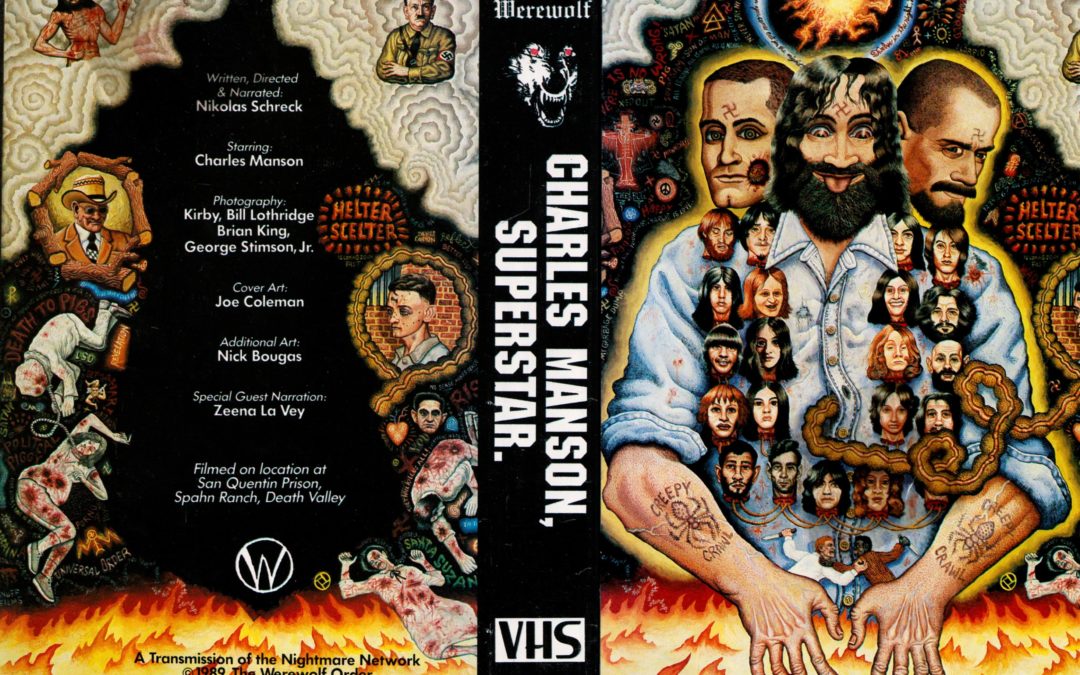
by Moe | Jan 30, 2020 | Ancient America, Demons, Latest Media, Magic
Recently, I came across a story about the cult murderer, Charles Manson playing on the Indian mounds in Ashland, Kentucky shared by author and occultist, Peter Levenda in his book Sinister Forces: The Nine: A Grimoire of American Political Witchcraft. The basic premise of Lavenda’s narrative is that there is a “sinister force” permeating this area of the U.S. that has a demonic effect on certain people who live in this region.

Lavenda said that while he was writing his book, he read that Charles Manson had lived in Ashland some time and he even played on the mounds that were allegedly built by a Native American tribe called the Adena inhabited the Ohio and Mississippi river valley areas. He writes in his book how the mounds were excavated on two separate occasions and they were eventually left alone after the Boy Scouts restored them in 1984.
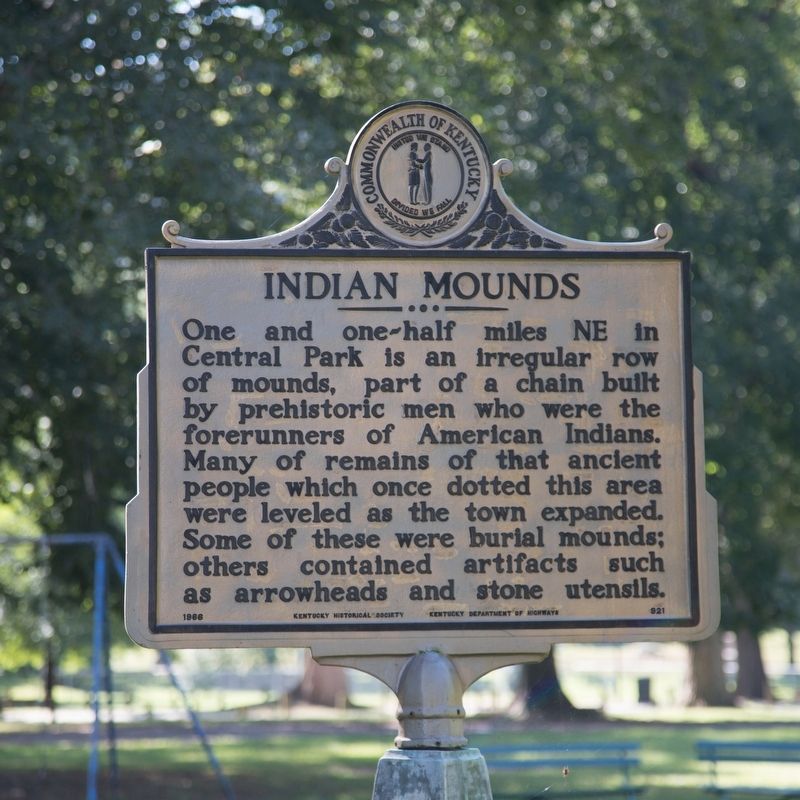
There was no official notice as to why the excavation of the Indian Mounds had ceased, but Lavenda speculated, “If there are evil spirits in Ashland, one wonders if they would be the souls of the ancient dead whose millennia-old sleep has been disturbed by businessmen and Boy Scouts” and later he says, “It seems someone was nervous.”
Interestingly, I discovered Lavenda’s research after I had written my own article, Daytona Demons: Native American Curses and Spiritual Warfare, about the city of Daytona, Florida that seems to have similar unseen forces infecting the region and has I contend – possessing people’s blood and minds.
To summarize my theory, I found that Native Americans in this area had performed black magic curses infecting the soil of Northern Florida by a tribe known as the Timucua who were a fierce people that were extremely tall, heavily tattooed, and they also practiced human sacrifice and cannibalism.
Daytona Demons: Native American Curses and Spiritual Warfare
After writing this article, I had discovered Levenda’s Great Work and a plethora of research and documents pertaining to Native American curses upon U.S. soil that are well documented all over the country. In the course of my studies, I discovered the magical and ritualistic rites that the Timucua had programmed into the Florida soil was actually a very common practice amongst almost all Native American tribes.
You will find burial mounds all the way down to Central America stretching all the way along the Gulf of Mexico through the Mississippi valley and all throughout the United States.
I believe the various mounds and routes they used were an actual magical fortress that they used to remote view through the leylines of the earth that they controlled via magic and rituals as the Adena culture had done all throughout Kentucky and the surrounding states.

You see, back then, magic and cures were a way of life for the Native Americans who inhabited the Americas for thousands of years.
The little known science and history I speak of deals with the ancient black magic spiritual methods used by various tribes and their priests who were able to use these mounds and earth connections for remote viewing and also for the psychospiritual effects and virulent weapons of cursing their foes. Spiritually loaded electrical charges in order to defend their territories against unsuspecting people who may find themselves on the very soil that may devour their spirits and souls.
To help validate my theories, I have found research on how these mounds were constructed using various layers of organic and decaying materials that were carefully separated and situated as if they were following some type of blueprint. In the book, The Mound Builders by George Bryce, he details how they were built and that many were used as “observation sites” which I contend was for remote viewing and also reveals the exact hidden science and telepathic filamentary magic employed by these Native American tribes.
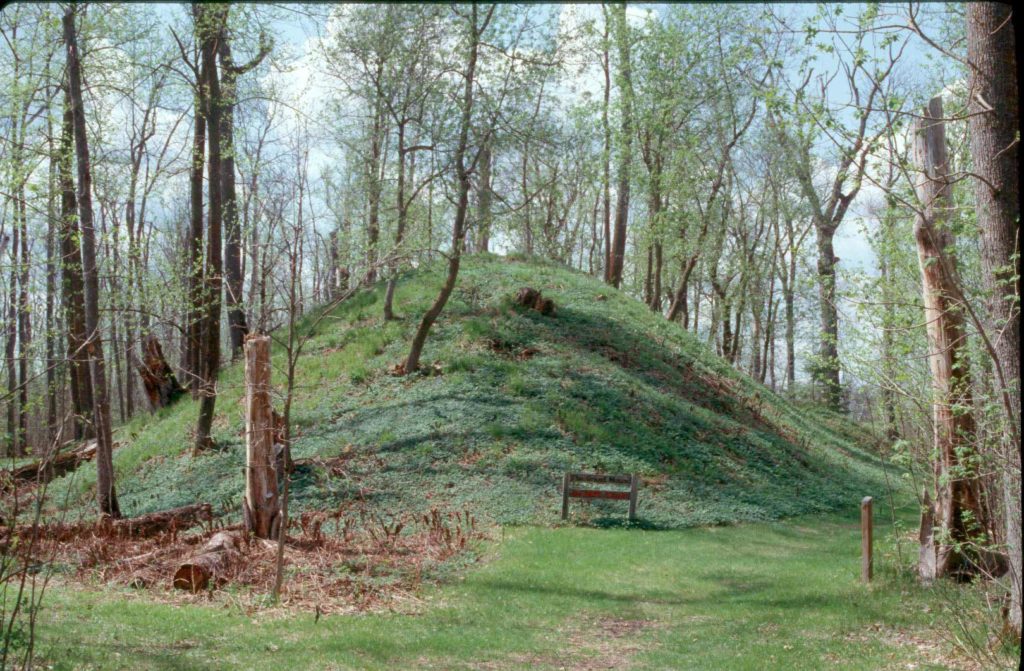
For example, Bryce had written about an Indian Mound in Minnesota called the Grand Mound situated along the Rainy River near International Falls;
miles from the head of Rainy River. It stands on a point of land where the Missachappa or Bowstring River and the Rainy River join. There is a dense forest covering the river bank where the mound is found. The owner of the land has made a small clearing, which now shows the mound to some extent to one standing on the deck of a steamer passing on the river.
The distance back from the water’s edge is about 50 yards. The mound strikes you with great surprise as your eye first catches it. Its crest is covered with lofty trees, which overtop the surrounding forest.”
He says, “These thriving trees, elm, soft maple, basswood and poplar, “60 or 70 feet high now thrust their root tendrils deep into the aforetime softened mould.”
A foot or more of a mass of decayed leaves and other vegetable matter encases the mound.
The brushy surface of the mound has been cleared by the owner, and the thicket formerly upon it removed.
The circumference of one fine poplar was found to be 4 feet 10 inches; of another tree, 5 feet 6 inches, but the largest had lately fallen. Around the stump, the last measured seven feet.”
Bryce further stated, “The mound is elliptical at the base.”
“The longest diameter, that is from east to west, the same direction as the course of the river is 117 feet. The corresponding shorter diameter from north to south is 90 feet. The circumference of the mound is consequently 325 feet.
The highest point of the mound is 45 feet above the surrounding level of the earth. As to height, the mound does not compare unfavorably with the celebrated mound at Miamisburg, Ohio, known as one of the classes of “observation mounds,” which is 68 feet high and 852 feet around the base.
In addition to its purpose of sepulture, everything goes to show that the “Grand Mound” of Rainy River was for observation as well,” he said.
As you can see from author Edward Bryce’s descriptions and as it related to my ongoing work, mold and decaying organic matter were used and I believe that when he says they were used for observation that has a dual meaning being one in the physical realm and the other being the spiritual realm which would refer to the modern military term “remote viewing.”
In addition, Bryce describes the base of these mounds as being elliptical in shape which also reveals some of the hidden science of the Native Americans.
To generate creative power only, the center point must be dependent upon its rotary function to create a revolving effect around a center or axis emanating from the center point which we could equate to evolution as well. This is for example how an engine is powered
But if you wish to devise a power center that is a “man-i-infestation or a power” from a non-rotary center whether it be constructive or destructive, you must do so from an elliptical shape that form the center. The meaning of elliptical is from the Greek elleiptikos which means defective and as we are food for the moon and human batteries powering the Matrix, you will find that the moon also follows an elliptical path around the Earth.
Bryce again emphasizes the mold in the upper crest and also the bodies and bones contained in this area along with the roots of trees which I contend creates an organic spiritual internet for whoever lives there and owns these “fungal computer terminals” which would be a similar science to what I discussed in my article, The mycelium network of fungal infected Geniuses who built our world
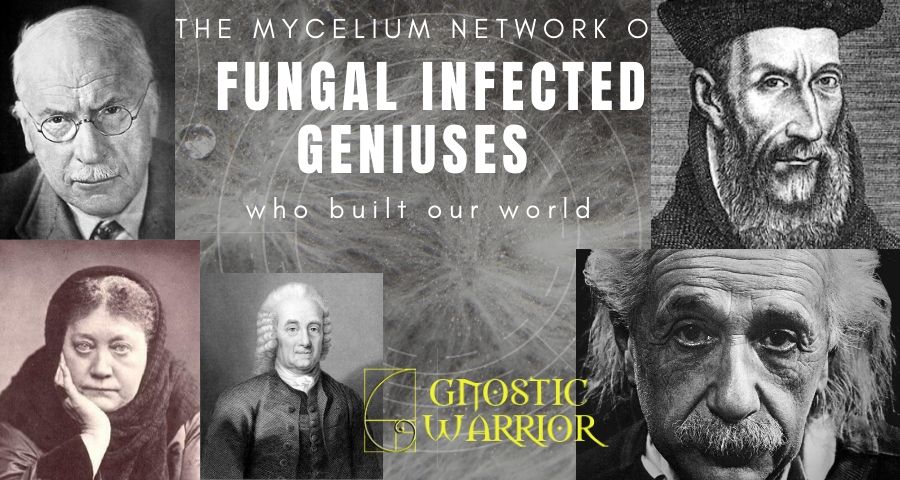
Bryce had written;
“Beginning on the crest of the mound, the mould was removed over a considerable space, and though some trouble was found from the presence of the roots of the growing trees, yet three or four feet from the surface human bones and skeletons began to occur. In some cases, a complete skeleton was found, in other cases what seemed to be a circle of skulls, buried alongside charred bones, fragments of pottery and other articles.
Several different excavations were made on the mound surface, and it was found that every part from the base to the crest contained bones and skeletons, to the depth of from six to ten feet as already said; bones and articles of interest were found thus far; deeper than this nothing. I shall now describe the articles found in this mound, and refer in some cases to what has been found in the other mounds of the Takawgamis.”
Now, let’s get back to the Grand Mound and the Rainy River…
Along with having some of the best sturgeon fishing in America, you will also find five sacred burial mounds and ancient villages developed approximately 2,500 years ago.

The Minnesota Historical Society (MNHS) acquired the historic site in 1970 but it has been closed to the public since 2002. MNHS director and CEO, Kent Whitworth had said;
“Grand Mound is part of an interconnected line of burial mounds that runs for 90 miles along the Canadian and U.S. sides of the Rainy River. The historical importance of this site cannot be understated, but we must protect it and provide education while also ensuring that Native people can care for the place where their ancestors lie.”
In my own assessment of these burial mounds and the magical rites associated with them, I believe that Kent Whitworth has it partially backward when he stated, “We must protect it” because that is not what these spirits that are buried there want, nor was it the intentions of these people for us to occupy this land.
With that said, we must “protect the American citizens” or either leave the area in its natural Native American state and let the true DNA ancestors of these people own and rule the land that we ignorantly have built upon or there must be a coordinated and massive bioremediation and restoration project to cleanse and purify these areas.
In researching the history of the very soil my family has lived upon and traveled, and also my knowledge of magic and the occult, I can now confidently say that there is a massive parasitic network underneath our feet that is adversarial to anyone and everyone who happens to become unknowingly enveloped in its mist.
For example, as it relates to the city of Ashland, Kentucky, it is built upon ancient Indian burial mounds as pointed out by Levenda that has a long history of massacres, senseless acts of violence and several serial killers who have “spawned out of this area” like Manson.
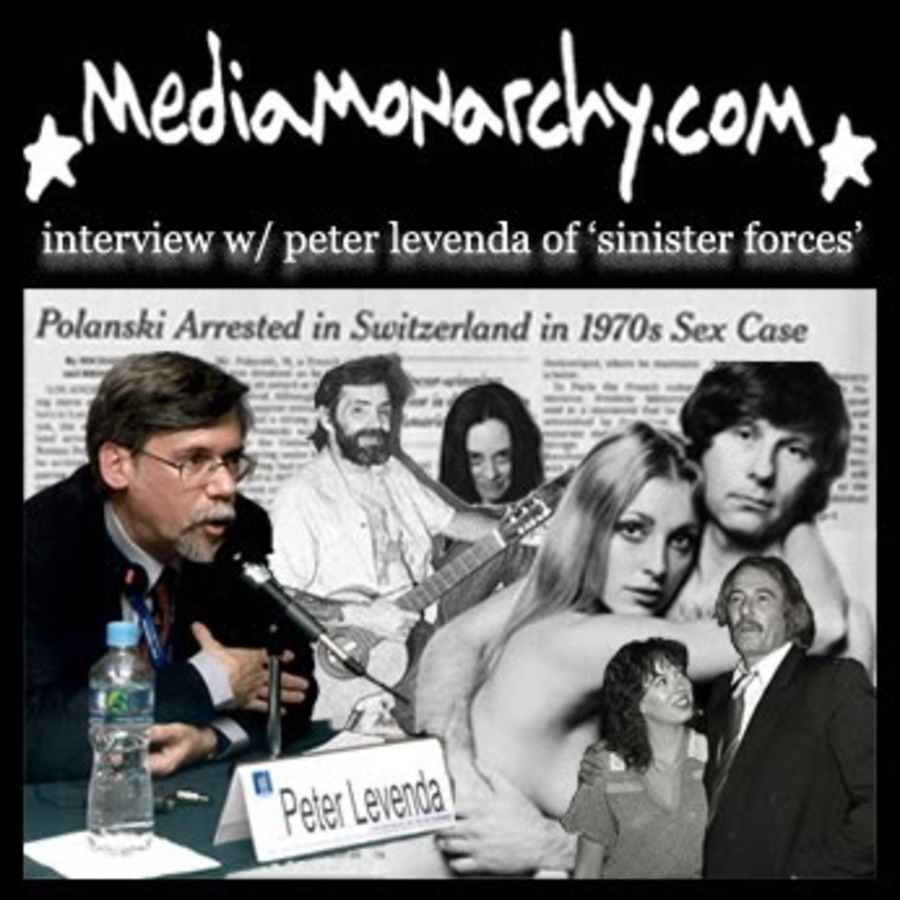
Lavenda said that while he was researching his book Sinister Forces, he read that Charles Manson had lived in Ashland some time and he even played on the mounds that were allegedly built by a Native American tribe called the Adena inhabited the Ohio and Mississippi river valley areas. He writes in his book how the mounds were excavated on two separate occasions and they were eventually left alone after the Boy Scouts restored them in 1984.
There was no official notice as to why the excavation of the Indian Mounds had ceased, but Lavenda speculated, “If there are evil spirits in Ashland, one wonders if they would be the souls of the ancient dead whose millennia-old sleep has been disturbed by businessmen and Boy Scouts” and later he says, “It seems someone was nervous.”
We know that Manson was the Bastard son of a son of a crazy Cincinnati prostitute and whose father was unknown, Charles Manson was born “no-name Maddox.” For all we know, his father could have been the devil but it was rumored that he may have been one of his mother’s Johns, a black cook, or a transient worker. (2) Manson had such a rough life that it was reported that as an infant, he was once traded by his mother “for a pitcher of beer” in a bar.
When he was just 6 years old, his mother, Kathleen Maddox was sent to jail for robbing a gas station with a ketchup bottle and then knocking out the clerk.
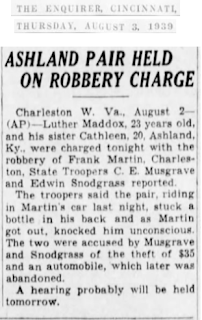
At 14 years old, Manson was sent to a notorious place that is reported to house and protect pedophile Roman Catholic priests called Boy’s Town. It was founded by Irish Catholic Priest, Edward Joseph Flanagan and has a long history of well-documented child crimes and pedophilia that lasts until this very day.
Boys Town sits on thirteen hundred acres and has seventy-six family homes that normally house over one hundred boys no matter their religion or race and they themselves are said to govern the village. All the delinquent boys who have been sent here had suffered from parental neglect, emotional, physical and or sexual abuse.
The children of Boys Town were described as having no fathers active in their lives so it is painfully obvious that the Catholic clergy invited them with what appears to be more than open arms and alms.
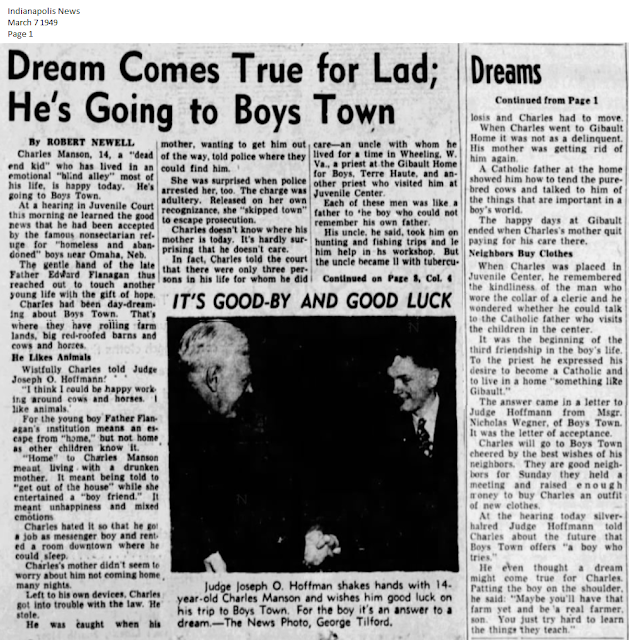
Apparently, the efforts of the priests had failed and his soul was far from saved…
Moe is the founder of GnosticWarrior.com. He is a father, husband, author, martial arts black belt, and an expert in Gnosticism, the occult, and esotericism.
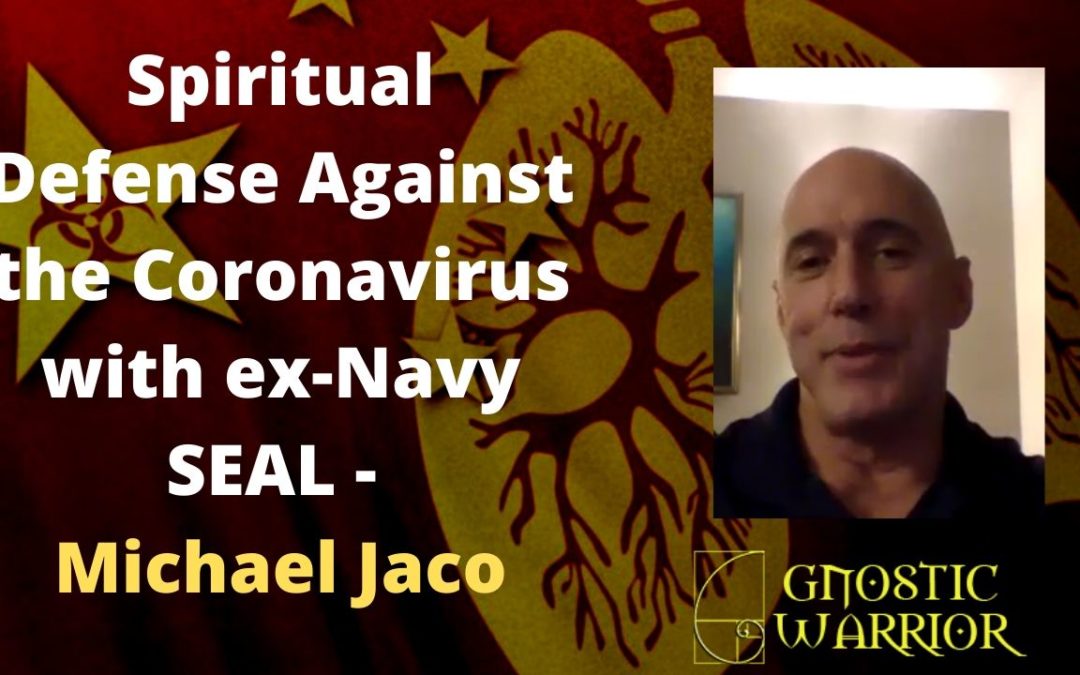
by Moe | Jan 29, 2020 | Gnostic Warrior Podcast Archives, Latest Media
Notice: Trying to get property 'ID' of non-object in /home/nginx/domains/gnosticwarrior.com/public/wp-includes/link-template.php on line 394
Notice: Trying to get property 'ID' of non-object in /home/nginx/domains/gnosticwarrior.com/public/wp-includes/link-template.php on line 409
Michael Jaco
In this special episode of the Gnostic Warrior, my guest is ex-Navy SEAL, philosopher, author, and the founder and Unleashing Intuition Secrets – Michael Jaco. Today we talk about the coronavirus and what you should do to keep mentally and spiritually strong during these dark times.
Jaco is a 35 year veteran Navy SEAL Team 6 Assault Team Operator, CIA security operative, master instructor and he has extensive training and knowledge of bioweapon warfare. You will find his insights and our discussion well worth your time.
the author of “The Awakening of a Warrior: Past Lives of a Navy SEAL Remembered,” and “The Intuitive Warrior.”
Deep withinside all of us lies the ability to be phenomenal at whatever we choose to do. Discover how to tap into this secret and unleash it at will from someone who has done it and can teach it to anyone.
Michael Jaco’s website: UnleashingIntuition.net
Gnostic Warrior On YouTube
More Gnostic Warrior Podcasts
Moe is the founder of GnosticWarrior.com. He is a father, husband, author, martial arts black belt, and an expert in Gnosticism, the occult, and esotericism.


















